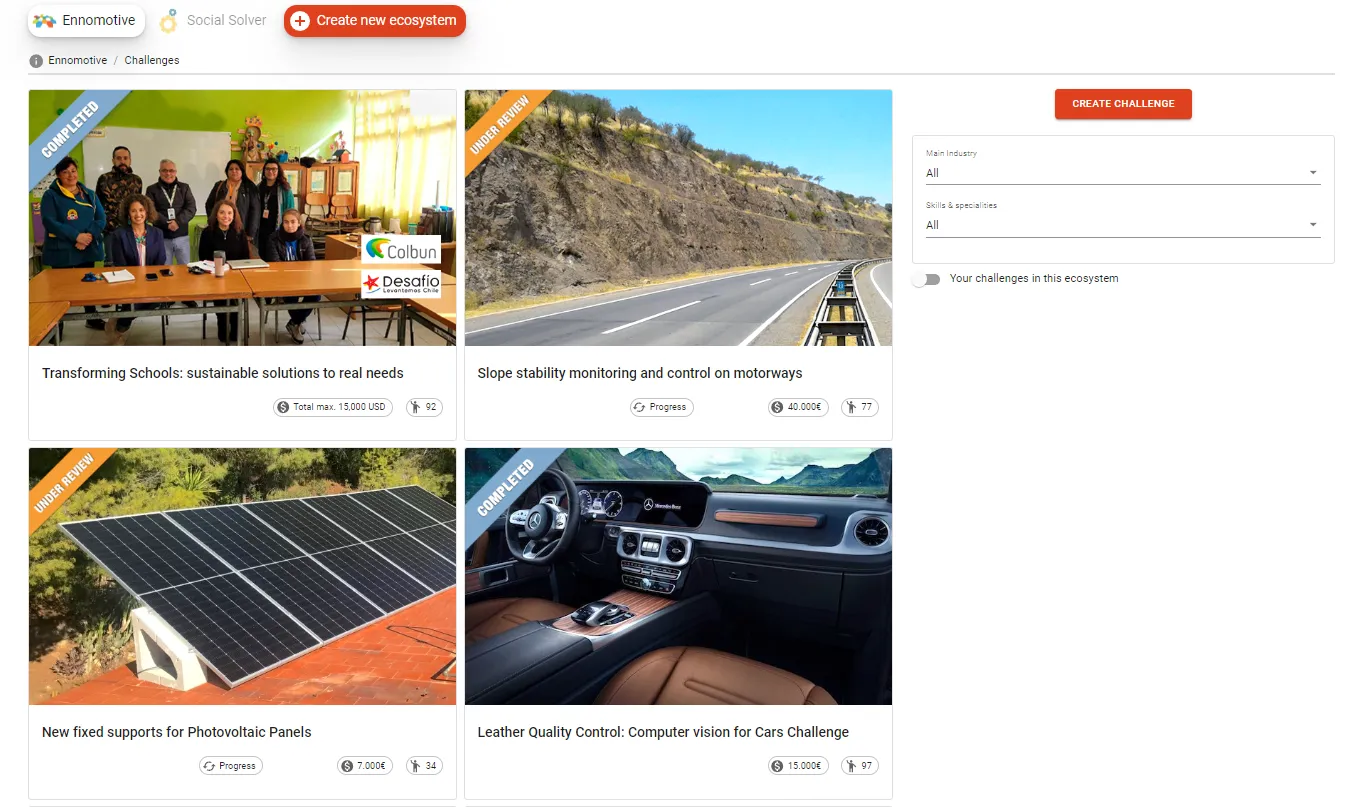Background
NATURGY is a leading multinational in the energy sector and it has a presence in more than 30 countries with almost 22 million clients. It has 15.5 GW installed power and an electricity generation diversified mix in many countries. It is the main liquified natural gas supplier of the Mediterranean and Atlantic basin with 30 bcm.
It actively promotes efficiency along its value chain with the aim of offering the maximum quality and satisfaction about its products and services.
NATURGY contributes to the development and welfare of the society. Its goal is to offer a sustainable, efficient, safe and environmentally and human-right friendly energy supply.
NATURGY predicts to double up the number of CNG supply points in Spain in 2019 and increase it exponentially in the following years.
The Challenge
Compared to gasoline and diesel, Compressed Natural Gas (CNG) is the most cost-efficient and clean alternative to fuel power vehicles.
The Natural Gas (NG) is supplied at the gas stations through pipelines at a standard service pressure of 8 bar. However, in order to use it in vehicles, the natural gas (NG) must be compressed to be supplied at 200 bar and 15º C.
In order to compress and supply CNG to any vehicle in a reasonable time (4 kg/min, on average), it is required to make a high initial investment in equipment and facilities.
The typical solution of a CNG station is described in annex 1. All the available solutions in the market nowadays are expensive or do not comply with the ISO 16923-2018 European safety standard and the CE marking. These solutions use different types of compressors and storage tanks. NATURGY has studied many solutions but none of them fulfill all the company requirements.
What is the client looking for?
For this reason, NATURGY is looking for disruptive ideas that reduce the initial investment cost per facility to a maximum of 185k€ or less while keeping the investment costs (CAPEX) + operational costs (OPEX) under 610k€ in an 8 years timeframe (see attached Annex 2: Expected Cost Chart).
CNG facilities will be supplying fuel to vehicles from 8:00h to 22:00h, estimating a growing demand curve for any CNG facility, as follows:
- Maximum 1,000 kg/day for the first 3 years
- Maximum 2,000 kg/day for the following 3 years
- Maximum 3,000 kg/day for the last 2 years.
In the CAPEX of the proposed facilities, the following topics shall be considered:
- - Civil work
- - Mechanical work
- - Electrical work
- - Compressor
- - Storage tanks, if any
- - Electric system
- - Control system
- - Fire control system
Concepts like the dispenser and the payments systems shall not to be considered in this challenge.
The ideal solution must be flexible, scalable or modular to adapt the supply capacity to the growing demand.
It could be considered a CAPEX greater than 185k€ as long as the investment is made progressively during the 8 years and the CAPEX + OPEX target (610k€) is not exceeded.
Although the NG will be supplied through pipelines, other supply methods may remain secondary or complementary as long as there is a big monetary benefit. In all cases, solutions that comply with the challenge requirements and only use the pipelines for supply will be prioritized.
All the above conditions shall be met in a proposed solution of the challenge.
See Annex 1 for the typical CNG facility description
See Annex 2 for the Expected Cost Chart
See Annex 3 for typical energy consumption rates.
Evaluation Criteria
The solutions will be evaluated according to these criteria in the following order:
- Lowest initial investment (CAPEX), under 185k€.
- Lowest operational cost (OPEX). CAPEX+OPEX limited in the 8 year timeframe to 610k€.
- Shortest tank-filling time.
- Largest concurrent supply capacity.
- Highest scalability and/or modularity
- Highest ability to be portable (quick installation and removal)
Deliverables
This is a 2-round tournament with the following requirements:
Round 1
A PDF that includes the following:
- Description of the solution, including a short specification of the process, materials and/or required machinery.
- Sketches/plans of the solution
- High-level estimated investment breakdown
- Costs and investment chart. Annex 2 “Expected Cost Chart” shall be filled
- Feasibility evidence, if possible
Round 2
Detailed description of the solution on a PDF that includes the following:
- Detailed solution
- Drawings / 3D models
- Break down of investment and costs calculations, including justifications of the figures proposed.
Timeline
Round 1 - 6 weeks + 2 weeks for evaluation
Round 2 - 3 weeks + 1 week for evaluation



